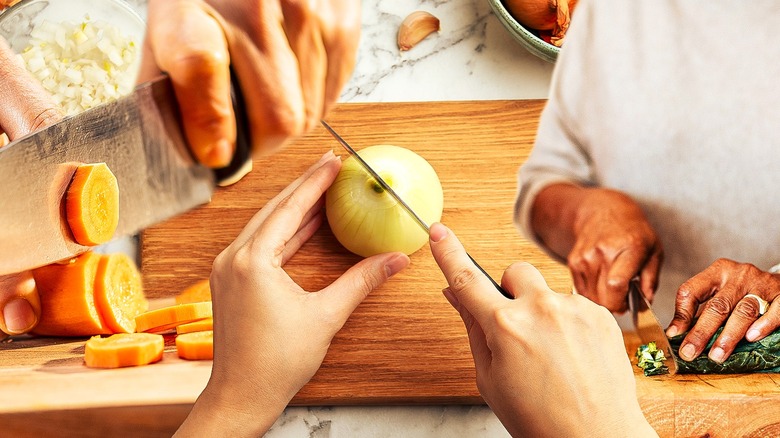When it comes to maintaining a healthy kitchen, knowing how to deodorize wood cutting board is essential for every kitchen professional. A wood cutting board is a staple in many kitchens, but over time, it can absorb odors from various ingredients. These lingering smells can affect the taste of your food and may even discourage you from using your favorite board.
In this comprehensive guide, we will delve into various methods and tips on how to keep your wood cutting board fresh and odor-free. We will focus on practical steps that kitchen professionals can take to ensure the longevity of their cutting boards while keeping hygiene in mind.

Understanding the Importance of Cleaning
Before diving into the methods of deodorizing, it is crucial to understand why cleaning your cutting board is of utmost importance. Wood boards, while durable, are prone to bacteria if not properly maintained. To prevent any cross-contamination when preparing different foods, like meat and vegetables, a regular cleaning routine is essential.
In addition to cleanliness, deodorizing your cutting board helps maintain its aesthetics and prolongs its lifespan. Smells can often signal that your board requires immediate attention, so its best to act promptly.

When Should You Deodorize Your Cutting Board?
Knowing when to deodorize your wood cutting board can save you from more complicated cleaning processes down the line. Here are a few indicators:
- When you notice a strong odor after chopping garlic, onions, or certain fish.
- If your board has become discolored or stained.
- If it has been used extensively for different types of food without proper cleaning in between.
Being proactive with these signs can help ensure that your cutting board remains in pristine condition.
Methods to Deodorize Your Wood Cutting Board
Now that you understand the importance and timing, lets look into some effective methods for deodorizing your wood cutting board.
1. Baking Soda Paste
One of the most popular methods involves using baking soda. This common household item is known for its natural deodorizing properties.
To make a paste, mix a few tablespoons of baking soda with water until you achieve a thick consistency. Apply this paste to the stained areas or the entire surface of the cutting board. Let it sit for about 10 minutes, then scrub the board with a soft sponge. Rinse well with warm water and allow it to air dry. This method not only deodorizes your board but also helps remove stains.
2. Lemon Juice and Salt
The combination of lemon juice and salt can work wonders on stubborn odors. Lemon juice has natural antibacterial properties, while salt acts as an abrasive to scrub away any grime.
Sprinkle salt generously onto the cutting board, then squeeze fresh lemon juice over the salt. Let the mixture sit for around 5 minutes. Afterward, scrub the board with half of the lemon to help lift odors and stains. Rinse the board thoroughly with warm water, and dry it well.
3. Vinegar Rinse
White vinegar is another excellent option for deodorizing. It is a natural disinfectant that can neutralize odors effectively.
Simply spray or wipe the vinegar directly onto the cutting board and let it sit for 5 minutes. Rinse the board with warm water followed by a pat dry with a clean towel. This method is particularly effective for recurring smells.
4. Hydrogen Peroxide
For particularly tough odors, hydrogen peroxide can be a reliable option. This powerful disinfectant will not only deodorize but also sanitize the surface of your cutting board.
Dilute the hydrogen peroxide with a little water if you wish, then wipe it over the cutting board using a paper towel or cloth. Let it sit for about 10 minutes before rinsing with water and drying.
Regular Maintenance Tips
In addition to deodorizing, regular maintenance will help keep your cutting board in excellent condition:
- Oil your cutting board regularly with food-grade mineral oil or beeswax to keep it hydrated.
- Use separate boards for raw meats and vegetables to prevent cross-contamination.
- Wash your board after each use with hot, soapy water, avoiding submerging it in water.
For more about the different types of cutting boards, be sure to visit cutting board types.
Why Choose Wood Over Plastic?
Many kitchen professionals debate the merits of using wood versus plastic cutting boards. Wood boards are not only aesthetically pleasing but also have natural antibacterial properties that can help keep your kitchen safe.
For a deeper look into the differences, such as usage and care, consider checking out wood vs plastic.
FAQs about Deodorizing Wood Cutting Boards
-
How often should I deodorize my cutting board?
Its best to deodorize your cutting board whenever you notice lingering smells, especially after cutting strong-smelling foods. -
Can I put my wood cutting board in the dishwasher?
No, it is not advisable. The heat and moisture in dishwashers can warp and damage wooden boards. -
Is it safe to use bleach on wood cutting boards?
No, bleach is too harsh and can break down the wood. Natural cleaning agents like vinegar and baking soda are safer alternatives.
Additionally, to ensure you're maintaining the best hygiene practices, the article at cutting board hygiene is a must-read.
As an Amazon Associate, I earn from qualifying purchases.


























